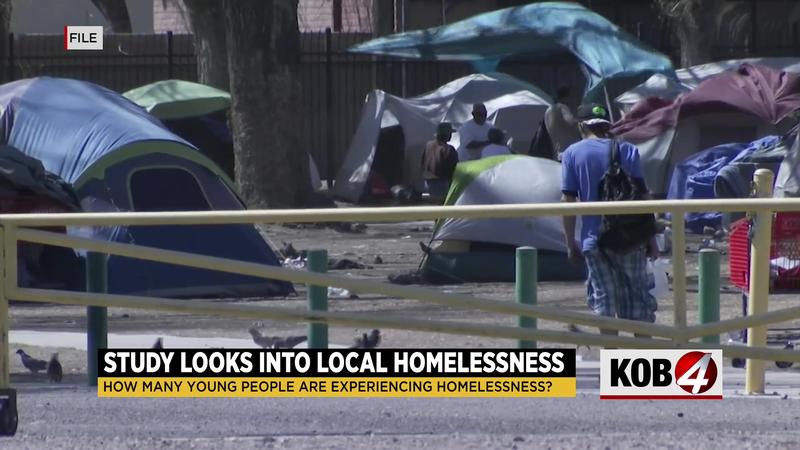Study looks into youth homelessness in Albuquerque
ALBUQUERQUE, N.M. – Homelessness is becoming a major concern across the nation, and that includes right here in New Mexico. In terms of a solution, officials say the first step is finding out just how many people don’t have a home.
That’s why the New Mexico Children, Youth and Families Department recently commissioned a study. Its aim is to figure out just how many young people in Bernalillo County are experiencing homelessness.
Albuquerque city leaders say this new and expansive report is really pulling back the curtain on an issue that’s historically been hard to track. They say this new data will give them a better idea on how to help.
"This is groundbreaking for our state and our community to have this kind of data," said Carol Pierce CABQ Family Services Department director.
Pierce says she’s only just starting to dig into the data, but admits it’s hard to take in.
"When you really soak in what this report is telling us, there’s no question we as a community need to do better,” said Pierce.
Researchers surveyed nearly 300 young people last summer, from ages 15 to 25, all experiencing some form of homelessness. They found up to 2,300 young people did have stable housing at one time, roughly a quarter of those people were sleeping outdoors or in a car. Another 16% inside someone else’s home, but less than 10% were staying at one of the city’s emergency shelters.
In fact, nearly half of all respondents said they’ve never visited a shelter, or applied for housing assistance.
"That is a definitely an important finding. I would, well, I was surprised, but not shocked,” Pierce said.
The report found people over the age of 18 and Indigenous people were statistically more likely to experience homelessness. But Pierce says the data underscores a much more telling factor.
"Trauma is really the common denominator. If you look at people in the population who are unhoused,” said Pierce.
Data shows 40% of unhoused youth experienced some type of harmful incident with their parent or guardian. Including exposure to drug-use, physical or sexual abuse, and even death.
Nearly half of respondents said they wanted to leave their homes.
"That speaks to what we really need to do as a community, because I think prevention is important no matter what. But it seems like we have even more of an opportunity when we can go upstream with young people,” said Pierce.
Pierce says this report is the first step at developing more effective solutions, ones designed specifically for young people.
"A youth shelter isn’t in our current budget, but we need to look at that to say, ‘what can we do collectively as a community with other partners,’” she said.
The report lists several recommendations, including a prevention-first strategy to help keep young people from ever experiencing homelessness. It also recommends streamlining services, like community shelters and outreach programs, so they are easier to access and use.


